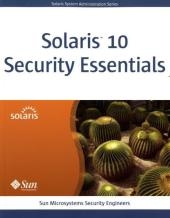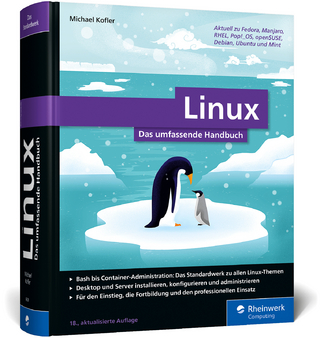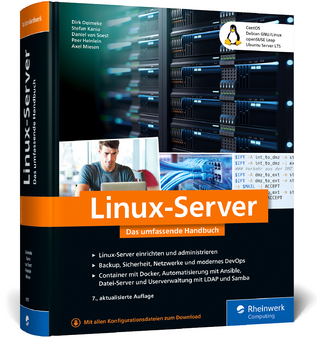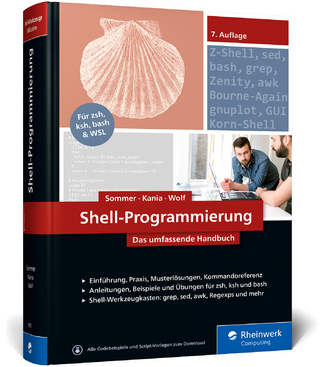
Solaris 10 Security Essentials
Prentice Hall (Verlag)
978-0-13-701233-6 (ISBN)
- Titel ist leider vergriffen;
keine Neuauflage - Artikel merken
The strengths of the Solaris operating system’s security model are its scalability and its adaptability. It can protect a single user with login authentication or multiple users with Internet and intranet configurations requiring user-rights management, authentication, encryption, IP security, key management, and more. This book is written for users who need to secure their laptops, network administrators who must secure an entire company, and everyone in between.
The book’s topics include
Zones virtualization security
System hardening
Trusted Extensions (Multi-layered Security)
Privileges and role-based access control (RBAC)
Cryptographic services and key management
Auditing
Network security
Pluggable Authentication Modules (PAM)
Solaris™ 10 Security Essentials is the first in a new series on Solaris system administration. It is a superb guide to deploying and managing secure computer environments.
This book is the work of the engineers, architects, and writers at Sun Microsystems who conceptualized the services, wrote the procedures, and coded the Solaris OS’s security features. These authors bring a vast range of industry and academic experience to the business of creating and deploying secure operating systems. Authors include Glenn Brunette, Hai-May Chao, Martin Englund, Glenn Faden, Mark Fenwick, Valerie Anne Fenwick, Wyllys Ingersoll, Wolfgang Ley, Darren Moffat, Pravas Kumar Panda, Jan Pechanec, Mark Phalan, Darren Reed, Scott Rotondo, Christoph Schuba, Sharon Read Veach, Joep Vesseur, and Paul Wernau.
Preface xv
About the Authors xix
Chapter 1: Solaris Security Services 1
1.1 A Solaris Security Story 1
1.2 Security Services in the Solaris OS 3
1.3 Configurable Security Services in the Solaris OS 5
Chapter 2: Hardening Solaris Systems 9
2.1 Securing Network Services 9
2.2 Configuration Hardening 16
2.3 Basic Audit and Reporting Tool 20
2.4 Signed ELF Filesystem Objects 22
2.5 Solaris Fingerprint Database (sfpDB) 23
Chapter 3: System Protection with SMF 29
3.1 Service Management Facility (SMF) 29
3.2 How SMF Configuration Works 30
3.3 Modifying Solaris Services Defaults 31
Chapter 4: File System Security 41
4.1 Traditional UNIX File System Security 41
4.2 ZFS/NFSv4 ACLs 48
4.3 Maintaining File System Integrity 52
4.4 UFS and NFSv4 Mount Options 57
4.5 ZFS Mount Options 58
4.6 ZFS Delegated Administration 59
Chapter 5: Privileges and Role-Based Access Control 63
5.1 Traditional UNIX Security Model 63
5.2 Solaris Fine-Grained Privileges 66
5.3 Solaris Role-Based Access Control 72
5.4 Privileges for System Services 90
Chapter 6: Pluggable Authentication Modules (PAM) 95
6.1 The PAM Framework 96
6.2 The PAM Modules 96
6.3 The PAM Configuration File 101
6.4 PAM Consumers 106
6.5 The PAM Library 109
6.6 PAM Tasks 110
Chapter 7: Solaris Cryptographic Framework 113
7.1 PKCS #11 Standard and Library 114
7.2 User-Level Commands 119
7.3 Administration of the Solaris Cryptographic Framework 122
7.4 Hardware Acceleration 125
7.5 Examples of Using the Cryptographic Framework 127
Chapter 8: Key Management Framework (KMF) 133
8.1 Key Management Administrative Utility 134
8.2 KMF Policy-Enforcement Mechanism 139
8.3 Key Management Policy Configuration Utility 140
8.4 KMF Programming Interfaces 142
Chapter 9: Auditing 145
9.1 Introduction and Background 145
9.2 Definitions and Concepts 147
9.3 Configuring Auditing 148
9.4 Analyzing the Audit Trail 157
9.5 Managing the Audit Trail 163
9.6 Common Auditing Customizations 165
Chapter 10: Solaris Network Security 169
10.1 IP Filter 169
10.2 What Is IPsec? 179
10.3 Solaris Secure Shell (SunSSH) 192
10.4 Configuring SunSSH 194
10.5 OpenSSL 199
10.6 Kerberos 201
10.7 Kerberos in the Solaris OS 204
10.8 Kerberos Administration 207
10.9 Application Servers 215
10.10 Interoperability with Microsoft Active Directory 217
Chapter 11: Zones Virtualization Security 221
11.1 The Concept of OS Virtualization: Introduction and Motivation 221
11.2 The Architecture of Solaris Zones 222
11.3 Getting Started with Zones 226
11.4 The Security Advantages of OS Virtualization 229
11.5 Monitoring Events in Zones 236
Chapter 12: Configuring and Using Trusted Extensions 239
12.1 Why Use Trusted Extensions? 239
12.2 Enabling Trusted Extensions 240
12.3 Getting Started 241
12.4 Configuring Your Trusted Network 243
12.5 Creating Users and Roles 248
12.6 Creating Labeled Zones 251
12.7 Using the Multilevel Desktop 254
Index 261
| Erscheint lt. Verlag | 19.11.2009 |
|---|---|
| Verlagsort | Upper Saddle River |
| Sprache | englisch |
| Maße | 181 x 229 mm |
| Gewicht | 490 g |
| Themenwelt | Informatik ► Betriebssysteme / Server ► Unix / Linux |
| Informatik ► Netzwerke ► Sicherheit / Firewall | |
| ISBN-10 | 0-13-701233-0 / 0137012330 |
| ISBN-13 | 978-0-13-701233-6 / 9780137012336 |
| Zustand | Neuware |
| Haben Sie eine Frage zum Produkt? |
aus dem Bereich


